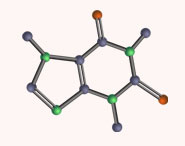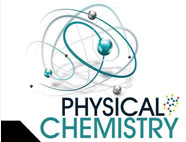


 علم الكيمياء
علم الكيمياء 
 الكيمياء التحليلية
الكيمياء التحليلية 
 الكيمياء الحياتية
الكيمياء الحياتية 
 الكيمياء العضوية
الكيمياء العضوية 
 الكيمياء الفيزيائية
الكيمياء الفيزيائية
 الكيمياء اللاعضوية
الكيمياء اللاعضوية 
 مواضيع اخرى في الكيمياء
مواضيع اخرى في الكيمياء
 الكيمياء الصناعية
الكيمياء الصناعية |
أقرأ أيضاً
التاريخ: 27-9-2019
التاريخ: 20-2-2017
التاريخ: 5-1-2022
التاريخ: 2023-08-26
|
Organometallic compounds have a carbon–metal bond. Lithium and magnesium are very electropositive metals, and the Li–C or Mg–C bonds in organolithium or organ magnesium reagents are highly polarized towards carbon. They are therefore very powerful nucleophiles, and attack the carbonyl group to give alcohols, forming a new C–C bond. For our fi rst example, we shall take one of the simplest of organolithiums, methyllithium, which is commercially available as a solution in Et2O, shown here reacting with an aldehyde. The orbital diagram of the addition step shows how the polarization of the C–Li bond means that it is the carbon atom of the nucleophile that attacks the carbon atom of the electrophile and we get a new C–C bond. We explained on p. 113 the polarization of bonds between carbon and more electropositive elements. The relevant electronegativities are C 2.5, Li 1.0, and Mg 1.2 so both metals are much more electropositive than carbon. The orbitals of MeLi are discussed in Chapter 4.
The course of the reaction is much the same as you have seen before, but we need to high light a few points where this reaction scheme differs from those you have met earlier in the chapter. First of all, notice the legend ‘1. MeLi, THF; 2. H2O’. This means that, first, MeLi is added to the aldehyde in a THF solvent. Reaction occurs: MeLi adds to the aldehyde to give an alkoxide. Then (and only then) water is added to protonate the alkoxide. The ‘2. H2O’ means that water is added in a separate step only when all the MeLi has reacted: it is not present at the start of the reaction as it was in the cyanide reaction and some of the borohydride addition reactions. In fact, water must not be present during the addition of MeLi (or of any other organ nometallic reagent) to a carbonyl group because water destroys organometallics very rapidly by protonating them to give alkanes (organolithiums and organ omagnesiums are strong bases as well as powerful nucleophiles). The addition of water, or sometimes dilute acid or ammonium chloride, at the end of the reaction is known as the work-up. Because they are so reactive, organolithiums are usually used at low temperature, often –78 °C (the sublimation temperature of solid CO2), in aprotic solvents such as Et2O or THF. Protic solvents such as water or alcohols have acidic protons but aprotic solvents such as ether do not. Organolithiums also react with oxygen, so they have to be handled under a dry, inert atmosphere of nitrogen or argon. Other common, and commercially available, organolithium reagents include n-butyllithium and phenyl lithium, and they react with both aldehydes and ketones. Note that addition to an aldehyde gives a secondary alcohol while addition to a ketone gives a tertiary alcohol.
Low-temperature baths Cooling reaction mixtures is generally the job of a cooling bath of ice and water for around 0 °C, or baths of solid CO2 in organic solvents such as acetone or ethanol down to about –78 °C. Small pieces of solid CO2 are added slowly to the solvent until vigorous bubbling ceases. Few chemists then measure the temperature of the bath, which may be anywhere from –50 to –80 °C. The temperature given in publications is often –78 °C, about the lower limit. Lower temperatures require liquid nitrogen. Practical handbooks give details.
Organ magnesium reagents known as Grignard reagents (RMgX) react in a similar way. Some simple Grignard reagents, such as methyl magnesium chloride, Me,Mg,Cl, and phenyl magnesium bromide, Ph,Mg,Br, are commercially available, and the scheme shows Ph,Mg,Br reacting with an aldehyde. The reactions of these two classes of organometallic reagent— organolithiums and Grignard reagents—with carbonyl compounds are among the most important ways of making carbon–carbon bonds, and we will consider them in more detail in Chapter 9.



|
|
|
|
حقن الذهب في العين.. تقنية جديدة للحفاظ على البصر ؟!
|
|
|
|
|
|
|
علي بابا تطلق نماذج "Qwen" الجديدة في أحدث اختراق صيني لمجال الذكاء الاصطناعي مفتوح المصدر
|
|
|
|
|
|
|
ضمن برنامج تأهيل المنتسبين الجدد قسم الشؤون الدينية يقدم محاضرات فقهية وعقائدية لنحو 130 منتسبًا
|
|
|